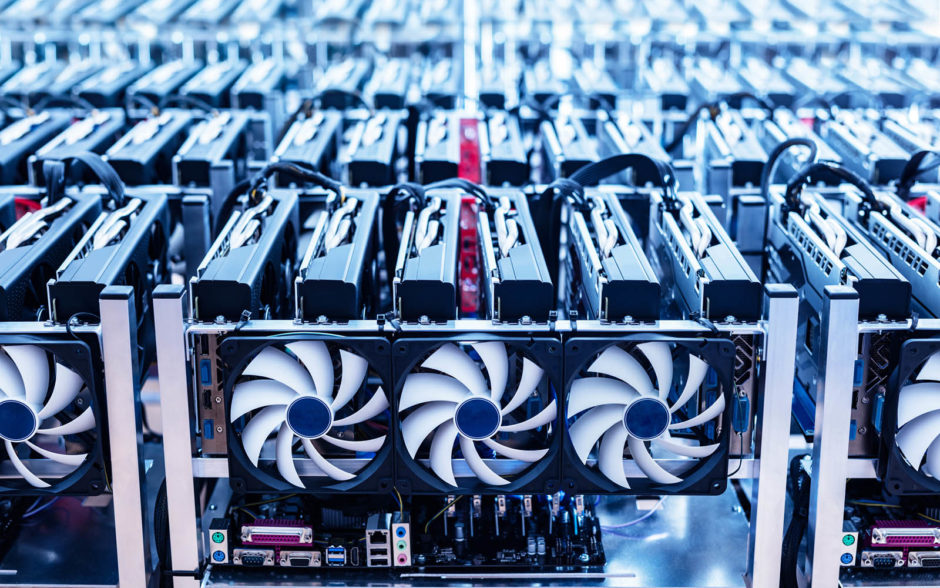Cryptocurrency Mining: A Comprehensive Guide to Unlocking Digital Wealth
Cryptocurrency mining, the process of verifying and adding transaction records to a blockchain, has emerged as a lucrative and complex field. This comprehensive guide delves into the intricacies of cryptocurrency mining, empowering you with the knowledge and insights to navigate this dynamic landscape.
From understanding the fundamentals of mining to exploring advanced strategies for maximizing profitability, this guide provides a holistic overview of the cryptocurrency mining ecosystem. Whether you’re a seasoned miner or just starting your journey, this guide will equip you with the essential knowledge to succeed in this rapidly evolving industry.
Cryptocurrency Mining Fundamentals

Cryptocurrency mining is the process of verifying and adding new transactions to a blockchain. Miners use specialized computers to solve complex mathematical problems, and the first miner to solve a problem is rewarded with cryptocurrency.
There are two main types of cryptocurrency mining: proof-of-work (PoW) and proof-of-stake (PoS). PoW mining requires miners to solve complex mathematical problems, while PoS mining requires miners to hold a certain amount of cryptocurrency in order to participate in the mining process.
Popular Cryptocurrencies that can be Mined
Some of the most popular cryptocurrencies that can be mined include Bitcoin, Ethereum, Litecoin, and Dogecoin.
Mining Hardware and Software

Cryptocurrency mining requires specialized hardware and software to solve complex mathematical problems and earn rewards. The choice of hardware and software can significantly impact mining efficiency and profitability.
Hardware Requirements, Cryptocurrency mining
- Graphics Processing Units (GPUs):GPUs are commonly used for mining cryptocurrencies like Ethereum and Monero, which rely on memory-intensive algorithms.
- Application-Specific Integrated Circuits (ASICs):ASICs are specialized hardware designed specifically for cryptocurrency mining, offering higher efficiency and lower power consumption.
- Field-Programmable Gate Arrays (FPGAs):FPGAs are reconfigurable hardware that can be programmed to perform specific tasks, including cryptocurrency mining.
Mining Software
- Mining Pool Software:This software connects miners to a pool, where they combine their computing power to increase the chances of finding blocks and earning rewards.
- Solo Mining Software:This software allows miners to mine independently without joining a pool, but it requires higher computing power and can be less profitable.
- Wallet Software:This software stores the private keys and manages the cryptocurrency holdings of miners.
Choosing the Right Hardware and Software
The choice of hardware and software depends on factors such as the cryptocurrency being mined, the budget, and the desired efficiency. For beginners, joining a mining pool and using GPUs can be a good starting point. As miners gain experience and capital, they can consider investing in ASICs or FPGAs for higher performance.
Mining Pools and Cloud Mining
In cryptocurrency mining, miners can choose to join mining pools or engage in cloud mining. Both options have their own benefits and drawbacks, and the choice depends on individual circumstances and preferences.
Mining Pools
Mining pools are groups of miners who combine their computational resources to increase their chances of finding a block and earning rewards. When a pool member finds a block, the reward is shared among all pool participants based on their contribution.
Benefits of Joining a Mining Pool:
- Increased probability of finding blocks:Pooling resources increases the overall hash rate, making it more likely to solve blocks.
- Steady income:Pool members receive a regular share of rewards, even if they do not find a block themselves.
- Reduced hardware costs:Miners can use less powerful hardware and still contribute to the pool’s overall hash rate.
Types of Mining Pools:
- Pay-per-share (PPS):Miners are paid a fixed amount for each share they contribute, regardless of whether the pool finds a block.
- Proportional:Miners are paid a percentage of the block reward proportional to their contribution.
- Solo:A type of pool where miners compete against each other to find a block, with the winner receiving the entire reward.
Cloud Mining
Cloud mining involves renting computing power from a third-party provider. This eliminates the need for miners to invest in hardware and maintain their own mining operations.
Pros of Cloud Mining:
- No hardware investment:Miners can start mining without the upfront cost of purchasing and maintaining hardware.
- Scalability:Miners can easily adjust their mining capacity by renting more or less computing power from the provider.
- No maintenance:The provider handles all hardware maintenance and software updates.
Cons of Cloud Mining:
- Higher fees:Cloud mining providers charge fees for renting their computing power, which can reduce profits.
- Limited control:Miners have less control over their mining operations and may be subject to the provider’s policies.
- Potential scams:There are fraudulent cloud mining providers who may not deliver on their promises.
Cryptocurrency Mining Profitability
Cryptocurrency mining profitability refers to the financial benefits miners earn by verifying and adding new blocks to the blockchain network. Several factors influence mining profitability, including the cryptocurrency’s market value, mining difficulty, electricity costs, and hardware efficiency. Understanding these factors is crucial for miners to maximize their profits.
Factors Affecting Mining Profitability
- Cryptocurrency Market Value:The price of the cryptocurrency being mined directly impacts profitability. Higher market values lead to increased mining rewards and, thus, higher profits.
- Mining Difficulty:The computational complexity required to solve the cryptographic puzzles associated with mining. Higher difficulty levels mean more time and resources are needed to find blocks, reducing profitability.
- Electricity Costs:The energy consumption of mining equipment significantly impacts profitability. Miners in regions with low electricity costs have an advantage over those in areas with expensive electricity.
- Hardware Efficiency:The efficiency of mining hardware, measured in hash rate, determines how many calculations per second the equipment can perform. More efficient hardware leads to higher mining rewards and lower electricity consumption.
Calculating Mining Profitability
The formula for calculating mining profitability is:
Profitability = (Block Reward + Transaction Fees)
- Cryptocurrency Price
- (Electricity Costs + Hardware Costs + Maintenance Costs)
Where:
Block Reward
The cryptocurrency reward for successfully mining a block.
Transaction Fees
Additional fees paid by users for faster transaction processing.
Cryptocurrency Price
The current market value of the cryptocurrency being mined.
Electricity Costs
The cost of electricity consumed by the mining equipment.
Hardware Costs
The initial investment in mining hardware.
Maintenance Costs
Ongoing expenses for hardware upkeep and repairs.
Strategies for Maximizing Mining Profits
- Choose Profitable Cryptocurrencies:Research and select cryptocurrencies with high market values and relatively low mining difficulty.
- Invest in Efficient Hardware:Opt for mining equipment with high hash rates and low power consumption to increase rewards and reduce electricity costs.
- Join Mining Pools:Pooling resources with other miners increases the chances of finding blocks and earning rewards more consistently.
- Negotiate Electricity Rates:Explore options to secure lower electricity rates or consider using renewable energy sources to reduce operating costs.
- Monitor Market Conditions:Stay informed about market trends and adjust mining strategies accordingly to optimize profitability.
Environmental Impact of Cryptocurrency Mining

Cryptocurrency mining, particularly for proof-of-work (PoW) cryptocurrencies, has raised concerns regarding its environmental impact. The energy-intensive process of solving complex mathematical puzzles to validate transactions and create new blocks on the blockchain contributes to greenhouse gas emissions.
Energy Consumption of Different Mining Methods
* CPU Mining:Uses the central processing unit (CPU) of a computer, consuming relatively low energy but resulting in slower mining speeds.
GPU Mining
Employs graphical processing units (GPUs), offering higher processing power and energy consumption than CPU mining.
ASIC Mining
Utilizes specialized application-specific integrated circuits (ASICs) designed specifically for mining, delivering the highest performance but also the highest energy consumption.
Sustainable Mining Practices
To mitigate the environmental impact of cryptocurrency mining, sustainable practices have emerged:* Renewable Energy Sources:Using renewable energy sources such as solar and wind power to power mining operations.
Energy-Efficient Hardware
Employing mining hardware with improved energy efficiency and cooling systems to reduce power consumption.
Proof-of-Stake (PoS) Consensus
Shifting to alternative consensus mechanisms like PoS, which do not require energy-intensive mining processes.
Legal and Regulatory Aspects of Cryptocurrency Mining
Cryptocurrency mining is a global activity, and as such, it is subject to a wide range of legal and regulatory considerations. The legal and regulatory landscape for cryptocurrency mining is constantly evolving, as governments and regulators around the world seek to understand and address the risks and opportunities associated with this new technology.
In some jurisdictions, cryptocurrency mining is considered a legitimate business activity, while in others, it is still unregulated or even illegal. The regulatory landscape for cryptocurrency mining can vary significantly from country to country, and it is important for miners to be aware of the laws and regulations that apply in their jurisdiction.
Compliance with Mining Laws
Miners should take steps to ensure that they are in compliance with all applicable laws and regulations. This may include obtaining the necessary licenses and permits, registering with the appropriate authorities, and paying taxes on their mining income.
Failure to comply with mining laws can result in a variety of penalties, including fines, imprisonment, and the seizure of mining equipment. Miners should seek legal advice to ensure that they are in compliance with all applicable laws and regulations.
Future of Cryptocurrency Mining
The future of cryptocurrency mining is uncertain, but there are a number of potential trends that could shape its development. One trend is the increasing adoption of new technologies, such as artificial intelligence (AI) and machine learning (ML). These technologies could be used to improve the efficiency of mining operations and make them more profitable.Another trend is the growing popularity of cloud mining.
Cloud mining allows miners to rent computing power from a cloud provider, which can be more cost-effective than purchasing and maintaining their own mining equipment. Cloud mining could make cryptocurrency mining more accessible to a wider range of people.Finally, the long-term viability of cryptocurrency mining will depend on the price of cryptocurrencies.
If the price of cryptocurrencies continues to rise, then mining will remain a profitable activity. However, if the price of cryptocurrencies falls, then mining could become less profitable and may eventually become unsustainable.
Impact of New Technologies
New technologies, such as AI and ML, could have a significant impact on the future of cryptocurrency mining. AI could be used to develop more efficient mining algorithms, and ML could be used to optimize the performance of mining hardware.
These technologies could make mining more profitable and accessible to a wider range of people.
Long-term Viability
The long-term viability of cryptocurrency mining will depend on a number of factors, including the price of cryptocurrencies, the cost of mining equipment, and the availability of cheap energy. If the price of cryptocurrencies continues to rise, then mining will remain a profitable activity.
However, if the price of cryptocurrencies falls, then mining could become less profitable and may eventually become unsustainable.
Wrap-Up
Cryptocurrency mining is a fascinating and ever-evolving field that offers both challenges and opportunities. By understanding the fundamentals, embracing innovation, and staying informed about regulatory changes, you can position yourself to harness the power of cryptocurrency mining and unlock the potential for financial success.
Commonly Asked Questions
What is the most profitable cryptocurrency to mine?
The most profitable cryptocurrency to mine depends on various factors, including market conditions, mining difficulty, and energy costs. However, some popular and profitable cryptocurrencies to consider include Bitcoin, Ethereum, Litecoin, and Dogecoin.
How much does it cost to start cryptocurrency mining?
The cost of starting cryptocurrency mining can vary depending on the type of mining equipment you choose and your electricity costs. Entry-level mining rigs can cost around $500, while more advanced rigs can range from $1,000 to $10,000 or more.
Is cryptocurrency mining legal?
The legality of cryptocurrency mining varies by jurisdiction. In most countries, cryptocurrency mining is legal, but it’s essential to check local laws and regulations to ensure compliance.


